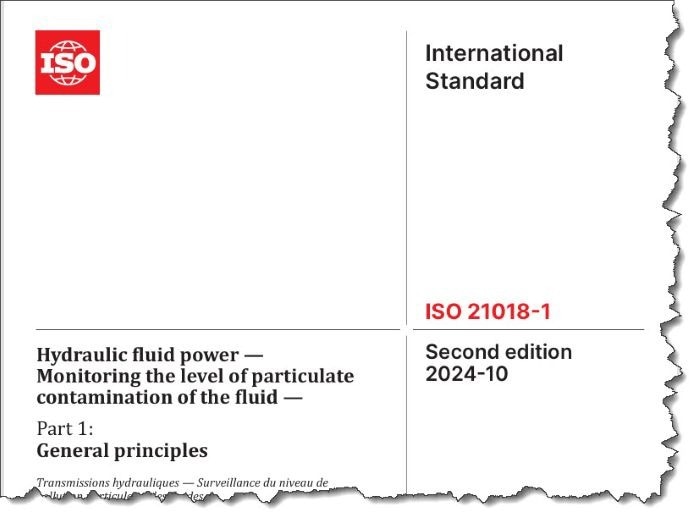Effective contaminant monitoring in hydraulic fluids is essential for system performance and longevity. Traditional methods like light obscuration (ISO 11171) measure particle size but lack shape analysis and contamination source identification. These limitations can lead to delays and uncertain assessments.
Dynamic Image Analysis (DIA) overcomes these challenges by capturing high-resolution images of particles, differentiating between contaminants, and providing real-time, field-based results. Industries benefit from DIA’s advanced capabilities, improving system reliability, optimizing maintenance, and reducing costs.
This interview with Vision Analytical explores how DIA is transforming hydraulic fluid contamination monitoring.
What are some of the most common challenges related to contaminant monitoring in hydraulic fluids?
System performance and longevity rely heavily on effectively monitoring contaminants in hydraulic fluids, fuels, and lubricants.
ISO 11171 recommends traditional particle counting methods like light obscuration, which measures particle size and concentration. However, these methods often lack the ability to analyze particle shape or identify contamination sources.
Without this critical information, experts are left making educated guesses about contamination origins in oil samples.
Another challenge is that many light obscuration techniques are not field-based, leading to delays in obtaining useful data. This can result in machine downtime or the risk of operating equipment outside of specifications.

Image Credit: ISO
How does dynamic image analysis help to address these challenges?
Dynamic Image Analysis (DIA) offers a more comprehensive approach to fluid contamination assessment. By capturing detailed images of particles, DIA can distinguish between contaminants such as fibers, wear debris, water droplets, and air bubbles.
This technique enhances contamination monitoring by providing real-time, field-based results, along with thumbnail images that offer deeper insight into particle characteristics and potential contamination sources. With DIA, there’s no need for educated guessing, significantly reducing the risk of human error.
How has the new ISO 21018-1 impacted the industry?
Contamination monitoring has historically relied on methods conforming to ISO 11171, which is mainly designed to accommodate light obscuration techniques.
The wider industry recognizes the need for alternative monitoring technologies, resulting in the introduction of ISO 21018-1:2024.
This new standard accommodates a wider range of analytical techniques, including DIA. This increase in scope provides a validated framework for fluid contamination assessment in hydraulic systems, lubricants, and fuels.
This new standard offers additional advantages. While alternative techniques for fluid contamination analysis provide valuable insights, some cannot be calibrated according to ISO 11171. Despite this, they can still serve as useful complementary methods for a more comprehensive contamination assessment.

Image Credit: ISO
What are some of the advantages of dynamic image analysis?
DIA offers several key advantages. Its ability to capture high-resolution images allows for precise identification of different contaminants, detecting particles as small as 2 microns.
DIA’s real-time monitoring capability also provides instant contamination data, enabling rapid, on-site decision-making.
The system is portable, battery-operated, and requires no expert input to identify contamination sources. This accessibility supports proactive maintenance, helping industries trace contaminants, optimize maintenance efforts, and prevent system failures.
Additionally, DIA complies with ISO 21018-1, which recognizes it as an alternative contamination monitoring technique. These features make DIA a highly effective method for assessing fluid cleanliness.
Comparing Contamination Monitoring Methods. Source: ISO
| Feature |
Dynamic Image Analysis (ISO 21018-1) |
Light Obscuration (ISO 11171) |
| Particle Size Detection |
2 µm to 300+ µm |
4 µm to ~100 µm |
| Shape Analysis |
Yes |
No |
| Thumbnail Images |
Yes |
No |
| Contaminant Source ID |
Yes |
No |
| On-Site Analysis |
Yes |
Limited |
| Compliance |
ISO 21018-1 |
ISO 11171 |
| Shape Classification |
Yes |
No |
What types of roles does dynamic image analysis play in fluid contamination monitoring?
DIA plays a crucial role across various industries, offering real-time contamination detection and ensuring compliance with cleanliness standards in fuel and lubrication monitoring.
In industrial and manufacturing settings, DIA helps reduce wear-related failures by proactively tracking contamination. For hydraulic systems, it enhances fluid cleanliness and improves equipment reliability by precisely identifying contaminants.
In research and laboratory applications, DIA supports contamination studies with detailed particle characterization. Across all these fields, DIA represents a significant advancement in contamination monitoring.
Its ability to go beyond simple particle counting provides valuable insights, while its alignment with ISO 21018-1 helps industries improve contamination assessment, enhance system reliability, and reduce maintenance costs.

This information has been sourced, reviewed and adapted from materials provided by Vision Analytical Inc.
For more information on this source, please visit Vision Analytical Inc.
Disclaimer: The views expressed here are those of the interviewee and do not necessarily represent the views of AZoM.com Limited (T/A) AZoNetwork, the owner and operator of this website. This disclaimer forms part of the Terms and Conditions of use of this website.